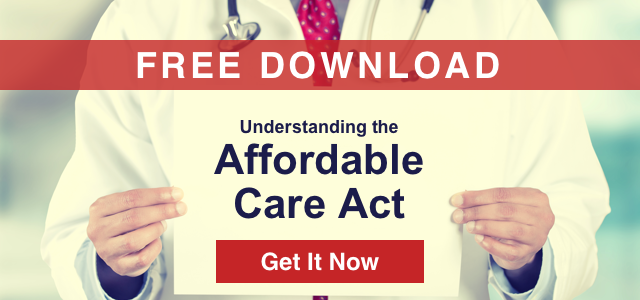
The requirements of the Affordable Care Act (ACA) administered by the Internal Revenue Service seem to be always evolving. As changes come into play, employers and their HR staff must be diligent about staying informed and up-to-date. A lack of compliance is becoming increasingly costly for businesses.
The IRS and Recent Changes in ACA and HSA Requirements
A number of recent changes were announced by the Internal Revenue Service (IRS) which will have both near-term impact, and will affect adjustments to be made going into the fall of this year.
ACA Update: IRS Issues Reminder to Employers of Approaching ACA Deadline
The Internal Revenue Service (IRS) has released a Health Care Tax Tip reminding employers that the extended deadlines to file the 2015 Affordable Care Act health coverage information returns are rapidly approaching.
All applicable large employers – employers with 50 or more full-time employees, including full-time equivalents – must provide the Internal Revenue Service must file their paper 1095-C forms by May 31 or E-file with the IRS by June 30 according to a recent IRS announcement reminding employers of the upcoming deadlines.
Employers filing 250 or more Forms1095-B or 1095-C forms must file electronically which requires an application process separate from other electronic filing systems. Self-insured employers that are not applicable large employers have identical deadlines for filing their 1094-B and 1095-B forms with the IRS.
ACA Affordability Percentage Will Increases to 9.69% for Beginning in Plan Year 2017
On April 12, 2016, the IRS also announced in Revenue Procedure 2016-24 that the affordability percentage under the ACA’s Employer Mandate will increase to 9.69% for 2017.
To add some perspective, an employee earning $8.00 an hour and averaging 30 hours per week would contribute an additional $0.69 per pay period (assuming 26 pay periods) at 9.66% vs. 9.5%.
For plan years beginning in 2017, employer-sponsored coverage will be considered affordable if the employee’s required contribution for self-only coverage does not exceed:
- 9.69 percent of the employee’s household income for the year, for purposes of both the pay or play rules and premium tax credit eligibility; and
- 8.16 percent of the employee’s household income for the year, for purposes of an exemption from the individual mandate.
These updated affordability percentages are effective for taxable years and plan years beginning after Dec. 31, 2016.
According to Tony Wilson, a Principal with NFP, it is generally recommended that employers use the 9.5% affordability safe harbor for 2016 since that is what was communicated to eligible employees during annual enrollment prior to the IRS’s announcement.
Changing the safe harbor during the plan year could open several doors that would expose employer from a compliance perspective and possibly a legal perspective
IRS Announces HSA Limits for 2017
The IRS last month announced the 2017 maximum contribution levels for Health Savings Accounts and out-of-pocket spending limits for High Deductible Health Plans that must be used in conjunction with HSAs.
Aside from a slight increase of $50 in the amount that individuals may contribute annually to their health savings accounts (HSAs) for self-only coverage, next year’s HSA-related limits remain the same.
In Revenue Procedure 2016-28, issued April 29, the IRS provided the inflation-adjusted HSA contribution limits effective for calendar year 2017, along with minimum deductible and maximum out-of-pocket expenses for the high-deductible health plans (HDHPs) that HSAs are coupled with.
These rate changes reflect cost-of-living adjustments, if any, and rounding rules under Internal Revenue Code Section 223.
According to Harry Sit, CEBS, who edits The Financial Buff blog,
“The contribution limits for various tax advantaged accounts for the following year are usually announced in the fall, except for HSAs, which come out in the spring. Due to mild inflation and rounding rules, the 2017 HSA contribution limit for family coverage will stay unchanged.”
Employers and HR Professionals Have a Resource for ACA Needs
An updated and streamlined reporting strategy will help your organization meet its obligations, while providing accuracy and timeliness. So take time to understand the law and prioritize accurate record keeping. In this way, you will make compliance a sure thing.
Another key step in maintaining HR compliance and increasing your company's cost-effectiveness is to consider outsourcing. A professional agency such a Accuchex can provide much-needed help with Human Resources needs and questions.


